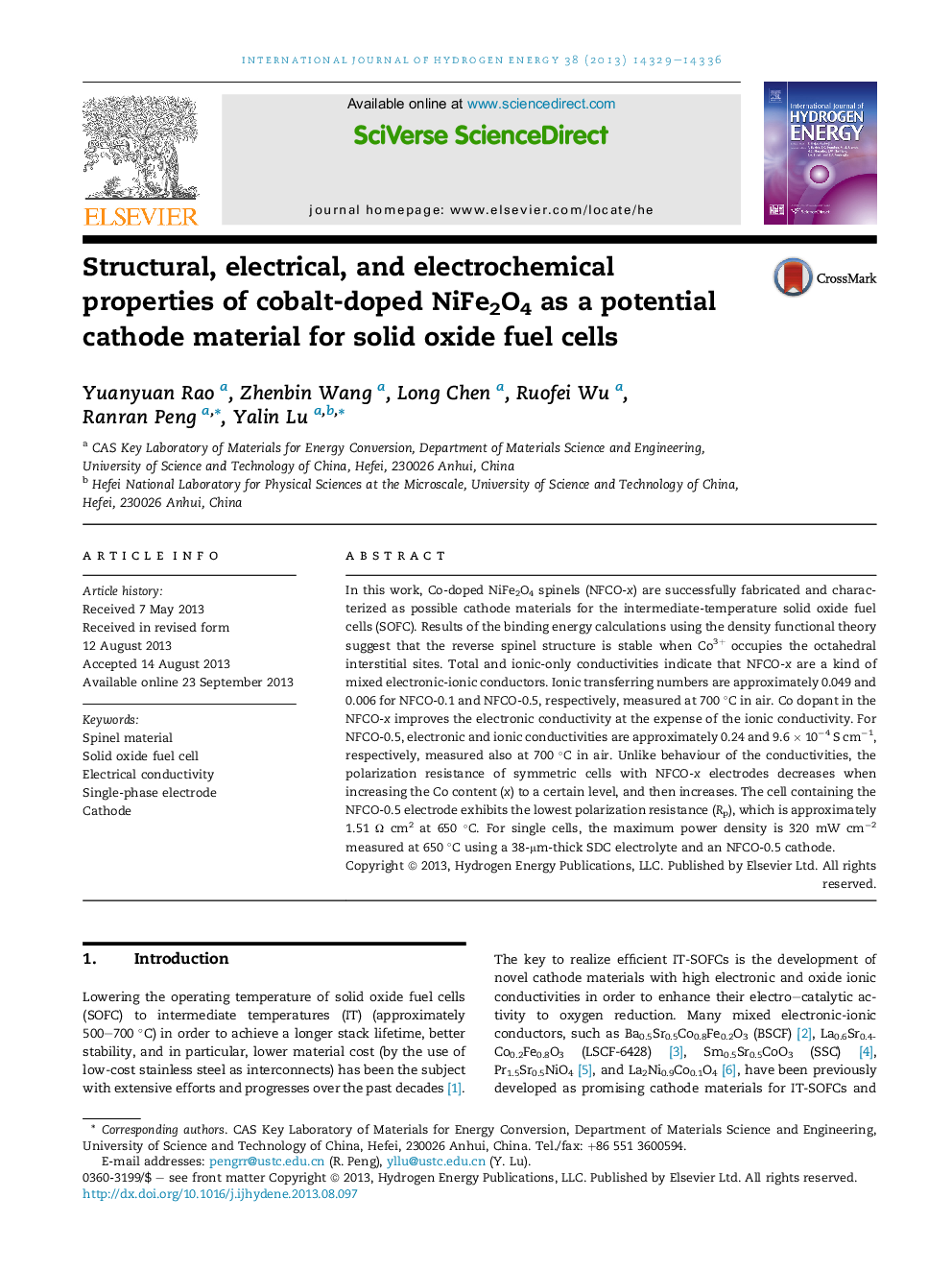| Article ID | Journal | Published Year | Pages | File Type |
|---|---|---|---|---|
| 1281394 | International Journal of Hydrogen Energy | 2013 | 8 Pages |
•Co-doped NiFe2O4 spinels were applied as promising cathodes in SOFCs.•That Co taking octahedral interstitial sites is the stable structure for NiFe2−xCoxO4.•Electronic conductivity of NiFe2−xCoxO4 increases with x.•NiFe2−xCoxO4 (x ≤ 0.6) has a close TEC with electrolyte.•Conductivities in cathode materials are the key in the cathode reaction.
In this work, Co-doped NiFe2O4 spinels (NFCO-x) are successfully fabricated and characterized as possible cathode materials for the intermediate-temperature solid oxide fuel cells (SOFC). Results of the binding energy calculations using the density functional theory suggest that the reverse spinel structure is stable when Co3+ occupies the octahedral interstitial sites. Total and ionic-only conductivities indicate that NFCO-x are a kind of mixed electronic-ionic conductors. Ionic transferring numbers are approximately 0.049 and 0.006 for NFCO-0.1 and NFCO-0.5, respectively, measured at 700 °C in air. Co dopant in the NFCO-x improves the electronic conductivity at the expense of the ionic conductivity. For NFCO-0.5, electronic and ionic conductivities are approximately 0.24 and 9.6 × 10−4 S cm−1, respectively, measured also at 700 °C in air. Unlike behaviour of the conductivities, the polarization resistance of symmetric cells with NFCO-x electrodes decreases when increasing the Co content (x) to a certain level, and then increases. The cell containing the NFCO-0.5 electrode exhibits the lowest polarization resistance (Rp), which is approximately 1.51 Ω cm2 at 650 °C. For single cells, the maximum power density is 320 mW cm−2 measured at 650 °C using a 38-μm-thick SDC electrolyte and an NFCO-0.5 cathode.
